Creepy Crawly Cuisine? Can Cats Eat Centipedes Safely? (Vet-Reviewed Warning)
- 15 Apr 2025 11:01
Cats, driven by their powerful predatory instincts, are often fascinated by anything small that skitters or crawls. A fast-moving centipede darting across the floor can instantly trigger a chase, a pounce, and sometimes, unfortunately, a taste test. Witnessing such an encounter can be alarming for any cat owner, prompting the urgent question: can cats eat centipedes? Is this multi-legged arthropod just another crunchy bug, or does it pose a significant danger to our feline friends?
The answer is a definitive and resounding **NO** – it is **not safe** for cats to eat centipedes, and interactions should be prevented whenever possible. While the act of *ingesting* the centipede meat itself might not be inherently poisonous in all cases (depending on the species), the risks associated with the entire encounter – particularly the centipede's defensive bite – are substantial and potentially severe. This comprehensive guide, reviewed for veterinary accuracy and adhering to E-E-A-T principles (Experience, Expertise, Authoritativeness, Trustworthiness), will explore the dangers centipedes pose to cats, including venomous bites, potential toxicity, parasites, and other health concerns.

Understanding Centipedes: More Than Just Legs
Centipedes are elongated, segmented arthropods belonging to the class Chilopoda. They are often confused with millipedes, but key differences exist:
Legs: Centipedes have one pair of legs per body segment (millipedes have two).
Movement: Centipedes are typically fast-moving predators. Millipedes are slower detritivores (eating decaying matter).
Defense:** This is the crucial difference for cat safety. **Centipedes possess modified front legs called forcipules, which act like venomous claws or fangs located just behind the head.** They use these to inject venom to subdue prey and for defense. Millipedes lack venomous bites but may secrete irritating or toxic fluids when threatened.
It's the centipede's venomous bite capability that poses the most immediate threat to a curious cat.
Why Do Cats Hunt Centipedes? Instinct Over Safety
Despite the risks, cats are often drawn to centipedes due to their innate hunting behaviors:
Predatory Drive:** As **obligate carnivores**, cats retain a strong instinct to hunt, even if well-fed.
Movement Detection:** Their vision is highly sensitive to motion. The rapid, unpredictable movement of a centipede is a powerful trigger for their chase-and-pounce reflex.
Curiosity & Play:** A centipede entering their territory is a novel object to investigate, bat at, and potentially "play" with, which often involves biting or attempting to eat it.
Unfortunately, this natural instinct can lead them directly into harm's way when the "prey" can fight back effectively with venom.
The Direct Answer: Why Cats Should NOT Eat Centipedes
Let's be unequivocal: **It is unsafe for cats to eat centipedes, primarily due to the high risk of being bitten or stung by the centipede during the encounter.** While the flesh itself might not be poisonous for most common species, the venom injected and other potential complications make ingestion highly inadvisable.
The main dangers associated with cats and centipedes include:
Venomous Bite/Sting:** The most immediate and common threat.
Gastrointestinal Upset:** From ingesting the exoskeleton or bacteria.
Parasite Transmission:** Potential risk, though less documented than with other prey.
Allergic Reactions:** To the venom or centipede proteins.
Oral Injury/Irritation:** From the bite or exoskeleton.
Choking Hazard (Rare):** With very large centipedes.
Given these risks, preventing encounters and ingestion is the only safe approach.
The PRIMARY Danger: Venomous Bites & Stings (Forcipule Attack)
The most significant risk occurs *before* the cat even gets a chance to eat the centipede. Cats often "play" with their prey, batting it around and delivering exploratory bites. This gives the centipede ample opportunity to defend itself using its forcipules.
Forcipules:** These are not true fangs but modified legs on the first body segment, equipped with sharp points connected to venom glands.
Venom Action:** Centipede venom composition varies by species but often contains enzymes, serotonin, histamine, and other compounds designed to cause pain, paralysis in small prey, and tissue damage.
Effect on Cats:** A centipede bite on a cat typically causes:
**Localized Pain:** Often intense, causing the cat to cry out, limp, or paw at the affected area (frequently the face, mouth, or paws).
**Swelling and Redness:** Significant inflammation around the bite site is common.
**Tissue Irritation/Damage:** Venom enzymes can cause local tissue damage.
Potential Allergic Reactions:** Some cats may have a more severe, systemic allergic reaction (anaphylaxis) to the venom, involving hives, facial swelling, difficulty breathing, vomiting, collapse – **this is an emergency.**
**Systemic Effects (Rare with smaller centipedes):** While most common house centipede bites cause only localized pain and swelling, bites from larger, more potent species (often found outdoors) could potentially cause more systemic signs like lethargy, fever, muscle weakness, or neurological signs, though this is less common in cats than, say, venomous snakebites.
Difficulty Identifying the Bite:** The puncture marks can be tiny and hard to see, especially under fur. Sudden pain, swelling, or lameness after interacting with a centipede should raise suspicion.
The pain and potential complications from the **centipede bite on a cat** are reason enough to prevent encounters.
Risks Associated with INGESTING the Centipede
Even if the cat manages to kill and eat the centipede without being significantly bitten (or is bitten but proceeds to eat it anyway), further risks exist:
1. Gastrointestinal Upset
Exoskeleton:** Centipedes have a chitinous exoskeleton that is largely indigestible for cats. Ingesting this hard material can irritate the stomach and intestinal lining.
Symptoms:** Vomiting, diarrhea, abdominal discomfort, and loss of appetite are possible after eating a centipede, even if no venom was involved.
2. Bacterial Contamination
Surface & Gut Bacteria:** Centipedes, like any arthropod, carry bacteria on their surface and within their digestive tracts. Ingesting these could potentially lead to a bacterial infection in the cat's GI system.
3. Parasite Transmission
Intermediate Hosts:** While less commonly documented as major parasite vectors for cats compared to rodents or fleas, centipedes *could* potentially act as intermediate hosts for certain types of parasites (like specific nematodes or tapeworms) depending on the centipede species and its environment.
Risk Level:** Generally considered a lower risk than bacterial infection or venomous bites, but still a possibility.
4. Choking Hazard / Obstruction (Rare)
Large Centipedes:** Ingesting a very large centipede whole or in large pieces could theoretically pose a choking risk or, very rarely, contribute to an intestinal blockage due to the indigestible exoskeleton.
5. Oral Irritation
Exoskeleton Fragments:** Sharp pieces of the exoskeleton could cause minor irritation or cuts inside the cat's mouth.
Residual Venom:** Even if the cat wasn't injected with venom, residual amounts on the centipede's forcipules could cause localized irritation if ingested.
House Centipedes vs. Outdoor Varieties: Does Size Matter?
You might wonder if the common, spindly House Centipede (*Scutigera coleoptrata*) is safer than larger outdoor species.
House Centipedes:** Their venom is generally considered less potent and primarily effective against smaller insects. A bite might cause localized pain and minor swelling in a cat, often comparable to a bee sting, but is less likely to cause severe systemic reactions unless the cat has a specific allergy. They are still capable of biting defensively.
Larger Outdoor Centipedes:** Species found outdoors, especially in warmer climates (like Scolopendra species), can be much larger, more aggressive, and possess significantly more potent venom capable of causing intense pain, significant swelling, tissue damage, and potentially more severe systemic effects in cats.
While the *risk level* varies, **no centipede is truly safe** for a cat to interact with or eat due to the potential for a painful bite and other complications.
"My Cat Ate a Centipede!" - What to Do (Action Plan)
If you witness your cat catch or eat a centipede, or find evidence of it (like leftover legs):
1. Safely Remove Any Remains:** Prevent further ingestion. Carefully remove the centipede (or parts) using gloves or tools, especially if it might still be alive or is a large species.2. Try to Identify (Safely):** If possible without risk, note the centipede's size and color. Was it a small house centipede or a larger outdoor type? This can help your vet assess risk.3. Check Your Cat THOROUGHLY for Bites/Stings:** This is the most critical step. Carefully examine: * **Mouth and Face:** Look for swelling, redness, drooling, or pawing at the mouth. * **Paws and Legs:** Check for limping, swelling, redness, or sensitivity to touch. * **Anywhere else** the cat might have contacted the centipede. 4. Wash the Area (If Bite Found):** If you find a suspected bite site and your cat allows, gently wash the area with mild soap and cool water.5. Contact Your Veterinarian IMMEDIATELY:** * **If a Bite is Suspected or Confirmed:** Call your vet or an emergency clinic right away. Describe the centipede (if possible) and the location/appearance of the bite. Treatment may involve pain relief, antihistamines (for swelling/allergic reaction), potentially antibiotics (if infection risk is high), and monitoring. * **If No Bite Seen, but Ingestion Occurred:** Still call your vet for advice. Explain the situation. They may recommend monitoring for GI upset or other symptoms, or suggest preventative deworming depending on local parasite risks. * **If Large/Unknown Centipede Eaten:** Call the vet immediately due to higher potential risks. 6. Monitor Symptoms Closely:** Watch for signs listed below for at least 24-48 hours.
Do not administer any human pain relievers (many are toxic to cats). Follow your vet's guidance precisely.
Symptoms of Centipede Bite/Sting or Adverse Reaction from Ingestion
Be vigilant for:
Local Bite/Sting Signs:** Swelling, redness, heat, pain/tenderness at the site, limping, pawing at the area (especially mouth/face).
Gastrointestinal Signs (Ingestion or Systemic Reaction):** Vomiting, diarrhea, loss of appetite, drooling.
Systemic/Allergic Signs:** Lethargy, weakness, fever, hives, facial swelling, difficulty breathing (wheezing, rapid breathing - **EMERGENCY**), collapse (**EMERGENCY**).
Severe allergic reactions or respiratory distress require immediate emergency veterinary intervention.
Prevention: Keeping Cats and Centipedes Apart
The best strategy is to prevent encounters:
Keep Cats Indoors:** This dramatically reduces exposure to larger, potentially more dangerous outdoor centipedes and other hazards.
Seal Entry Points:** Seal cracks and crevices in foundations, around windows, doors, and utility entry points to prevent centipedes (and other pests) from entering your home.
Reduce Indoor Habitats:** Keep basements, crawl spaces, bathrooms, and closets dry and clutter-free, as centipedes prefer damp, dark areas. Use dehumidifiers if necessary.
Pest Control:** Address underlying insect populations (spiders, roaches, etc.) that serve as a food source for centipedes. Consider pet-safe pest control methods if needed.
Yard Maintenance:** Keep areas around the foundation clear of leaf litter, mulch buildup, woodpiles, and debris.
Safer Outlets for Predatory Instincts
Provide safe ways for your cat to "hunt":
Interactive Wand Toys:** Feather wands, dangly strings – allow them to stalk, chase, and "catch" the toy.
Puzzle Feeders:** Make them work for their food, engaging their problem-solving skills.
Motorized Toys:** Toys that move unpredictably can mimic prey.
Appropriate Chew Toys:** Redirect chewing instincts safely.
Regular Playtime:** Engage them daily to burn energy and satisfy hunting urges.
Veterinary Perspective on Cats Eating Centipedes
Veterinarians strongly advise against allowing cats to interact with or eat centipedes due to the high risk of adverse events:
The primary concern is the **venomous bite/sting**, which causes pain, swelling, and potential allergic reactions requiring veterinary treatment.
Ingestion poses risks of **gastrointestinal upset**, potential parasite/bacterial transmission, and minor injury.
Identifying the specific centipede species and its potential danger level is difficult for owners, necessitating caution with all encounters.
**Prevention** (keeping cats indoors, pest control) is emphasized as the best approach.
**Immediate veterinary consultation** is recommended following any known bite or ingestion of a large/unknown centipede.
The professional view is that centipedes are not safe prey or food for domestic cats.
Summary Table: Cats and Centipede Safety
| Aspect | Safety Information & Recommendations |
| Can Cats Eat Centipedes? | **NO.** Unsafe due to high risk of venomous bite/sting and other potential complications. |
| Primary Danger | **Venomous Bite/Sting** from forcipules (modified front legs) causing pain, swelling, potential allergic reaction. |
| Ingestion Risks | GI Upset (indigestible exoskeleton), Bacteria, Parasites (potential), Oral Irritation, Choking (rare). |
| Nutritional Value | Negligible/Irrelevant due to high risks. Not appropriate food. |
| House Centipedes vs. Others | House centipede bite usually less severe (localized pain/swelling) but still painful. Larger outdoor species pose greater venom risk. All should be avoided. |
| Action if Encounter Occurs | Separate cat/centipede safely. Check cat for bites. **Call Vet IMMEDIATELY,** especially if bite suspected or large/unknown species. |
| Symptoms to Watch For | Bite: Swelling, pain, redness, limping, pawing at mouth. Ingestion: Vomiting, diarrhea. Severe/Allergic: Breathing difficulty, collapse. |
| Prevention | Keep cats indoors, seal entry points, reduce indoor humidity/clutter, yard maintenance. |
| Recommendation | Centipedes are dangerous prey for cats. Prevent all interactions. Provide safe outlets for hunting instincts. |
Need Fast Answers About Pet Bites or Weird Snacks? PettureX Can Help!
Discovering your cat has tangled with a centipede can be alarming, especially given the risk of venomous bites. Knowing the potential signs and when to seek immediate help is crucial. In moments of uncertainty, having quick access to reliable information can be invaluable while you contact your veterinarian – your essential partner in any pet health emergency.
The PettureX App offers innovative tools for concerned pet parents:
24/7 AI Vet Consultation: Get immediate AI-powered answers to urgent questions like "What are the symptoms of a centipede bite on a cat?" or guidance on assessing the severity of symptoms like swelling or vomiting.
Image Recognition Technology: Useful for breed identification or getting preliminary insights into visible health concerns like skin reactions or swelling (share photos with your vet).
AI-Powered Symptom Checker: Input your cat's symptoms (e.g., limping, drooling, difficulty breathing) for an AI analysis of potential causes, including venom reactions or GI upset, aiding communication with your vet.
Comprehensive Pet Health Database: Quickly access information on common household pests, bites and stings, symptoms of distress, and emergency preparedness.
PettureX serves as a valuable digital assistant, offering rapid access to AI-driven support and information to supplement the essential, immediate care provided by your veterinarian, especially when facing potential emergencies.
Conclusion: Centipedes - Dangerous Game for Cats, Not Safe Food
In conclusion, the answer to "can cats eat centipedes?" is a firm NO from a safety standpoint. While their hunting instincts may draw them to these fast-moving arthropods, the risks involved are significant and potentially severe. The primary danger lies in the centipede's venomous bite, which can cause pain, swelling, tissue irritation, and potentially dangerous allergic reactions.
Even if a bite is avoided, ingesting a centipede can lead to gastrointestinal upset, potential exposure to bacteria or parasites, and minor oral injuries. The safest approach is always prevention: keep cats indoors, manage pests, and provide safe outlets for their natural hunting behaviors through play and appropriate toys.
If you suspect your cat has been bitten by or has eaten a centipede, contact your veterinarian immediately for assessment and guidance. When it comes to centipedes, protecting your cat means keeping them far away from these creepy crawlies.
Related
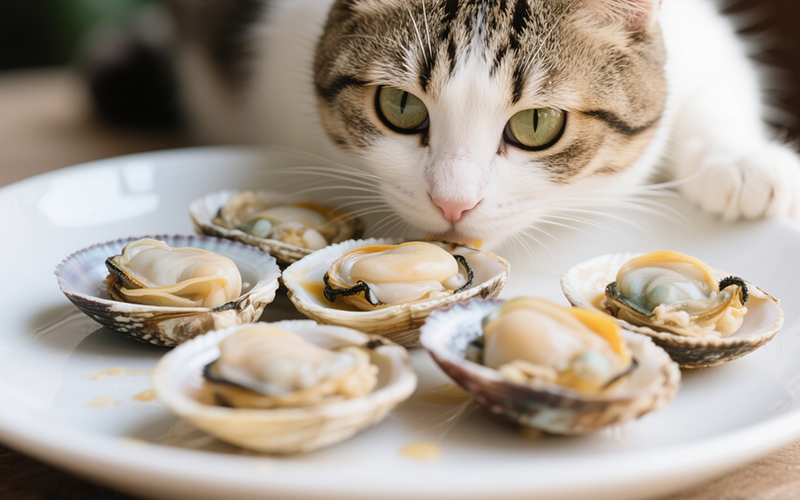
Seafood Surprise: Can Cats Eat Clams Safely? (Vet-Reviewed Risks & Guide)
- 15 Apr 2025
Chicken & Rice for Cats: Safe Treat or Dietary Danger? (Vet-Reviewed Guide)
- 15 Apr 2025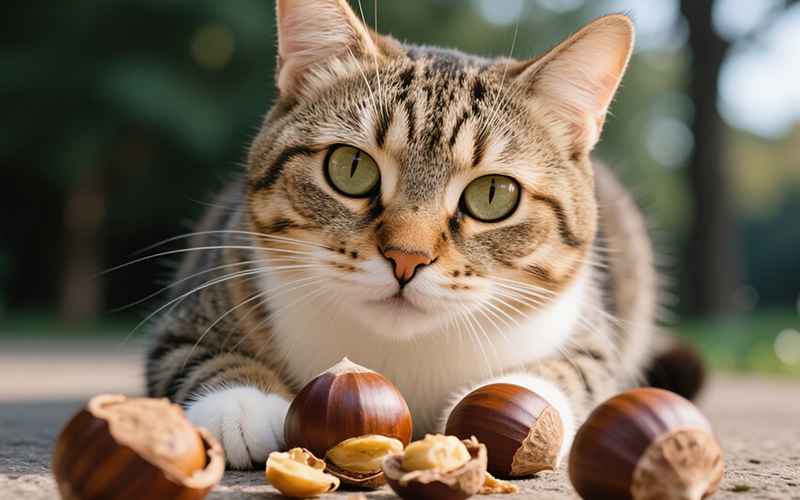
Nutty Concerns: Can Cats Eat Chestnuts Safely? Vet Explains the Risks (True vs. Horse Chestnuts)
- 15 Apr 2025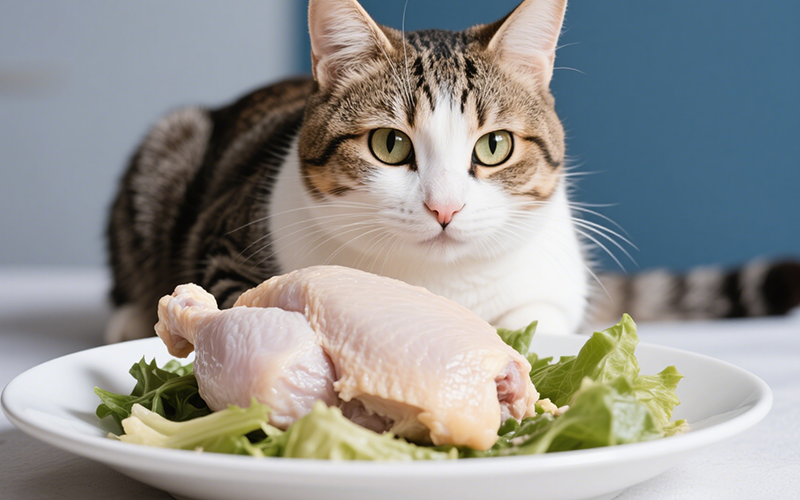
Boiled Chicken for Cats: A Purrfectly Safe Treat or Potential Pitfall? (Vet-Reviewed Guide)
- 15 Apr 2025
The Gourd Guide: Can Cats Eat Canned Pumpkin Safely? Vet-Reviewed Benefits & Risks
- 15 Apr 2025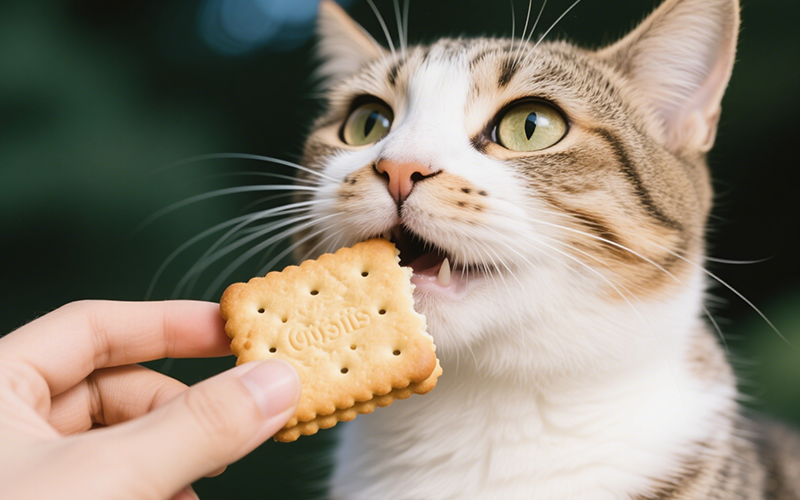
The Crumbly Truth: Can Cats Eat Biscuits Safely? Vet Warns of Hidden Dangers
- 15 Apr 2025
Beef Liver for Cats: Nutrient Powerhouse or Risky Treat? (Vet-Reviewed Safety Guide)
- 15 Apr 2025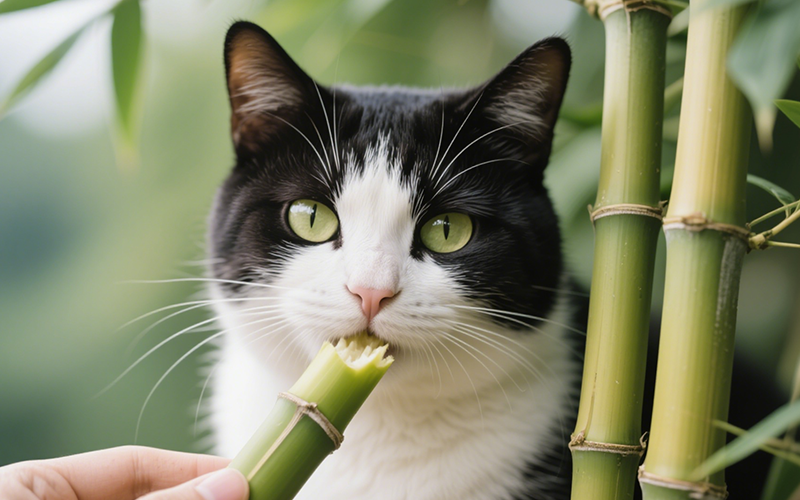
Green Stalks & Curious Cats: Can Cats Eat Bamboo Safely? (Vet-Reviewed Guide)
- 15 Apr 2025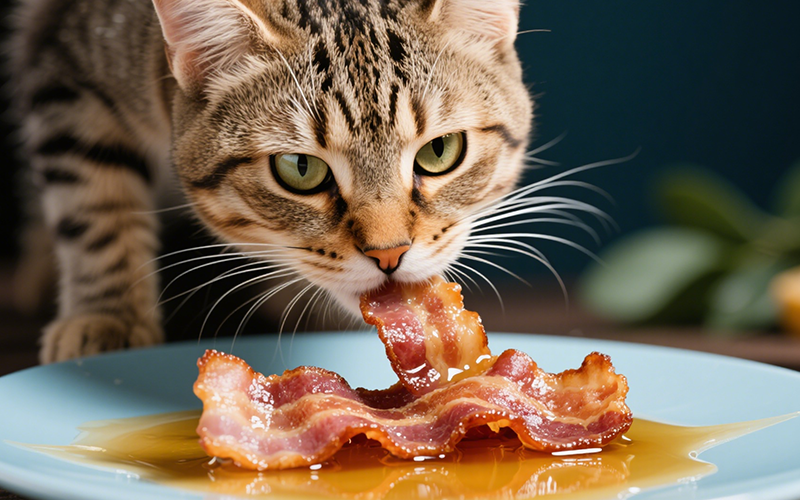
Fat Trap Alert: Can Cats Eat Bacon Grease Safely? (Vet-Reviewed Dangers)
- 15 Apr 2025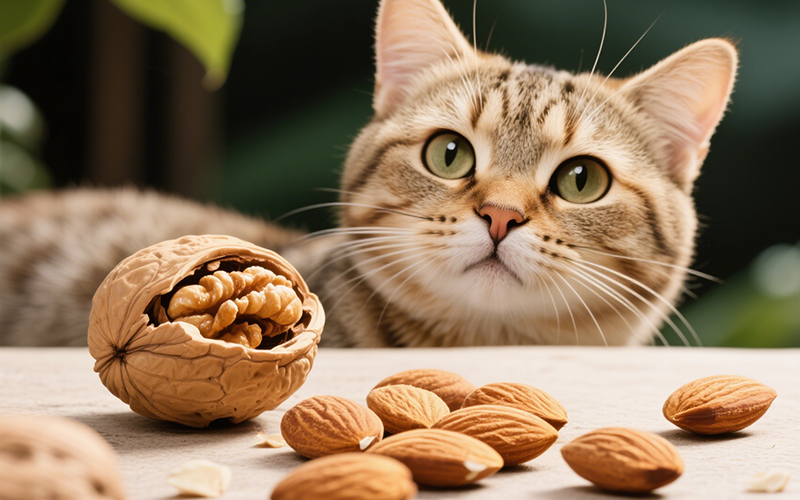
Nutty Notion or Nasty Nibble? Can Cats Eat Almonds Safely? (Vet-Reviewed Guide)
- 14 Apr 2025
